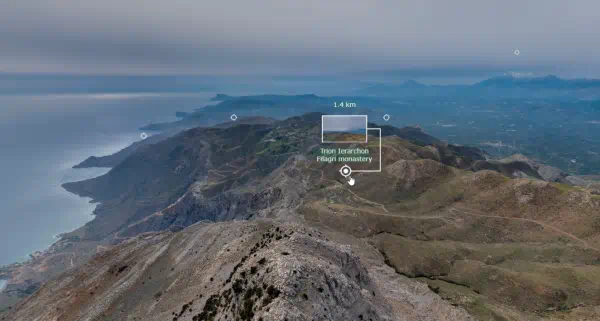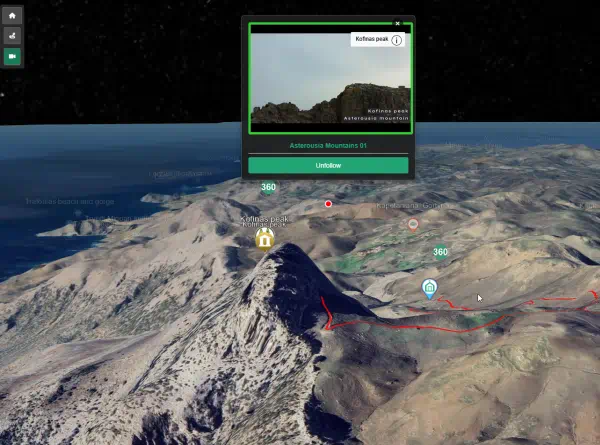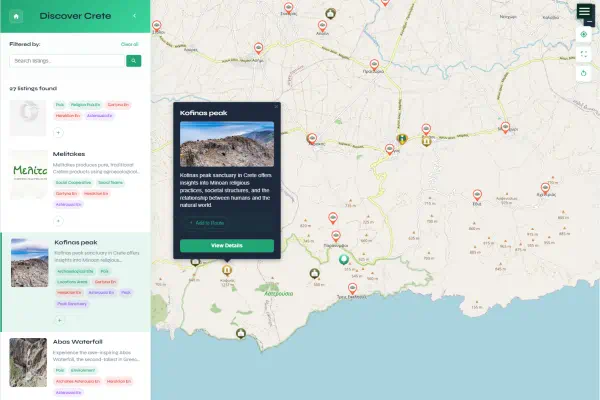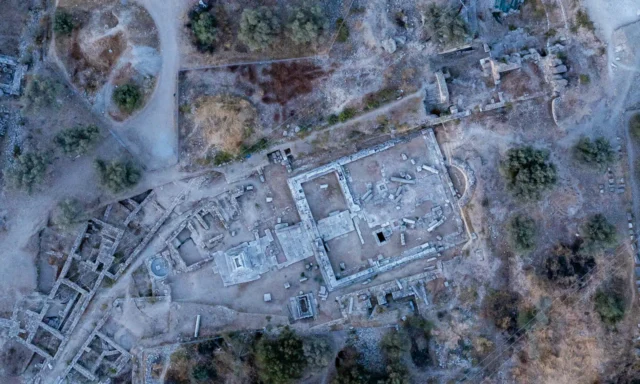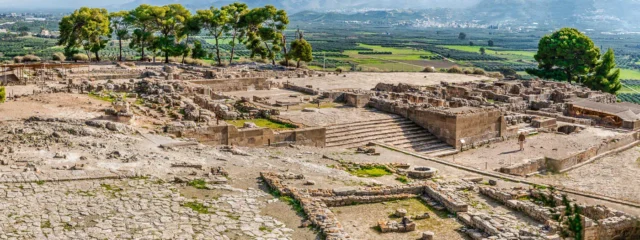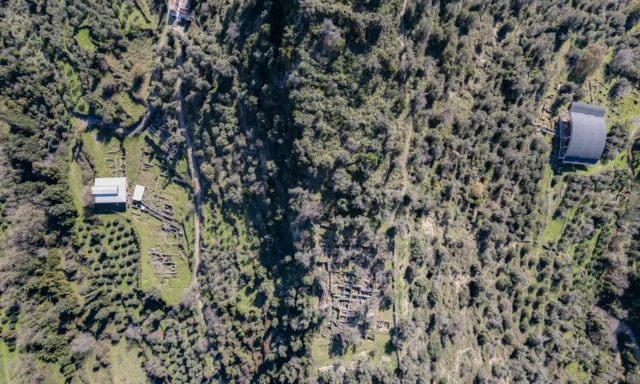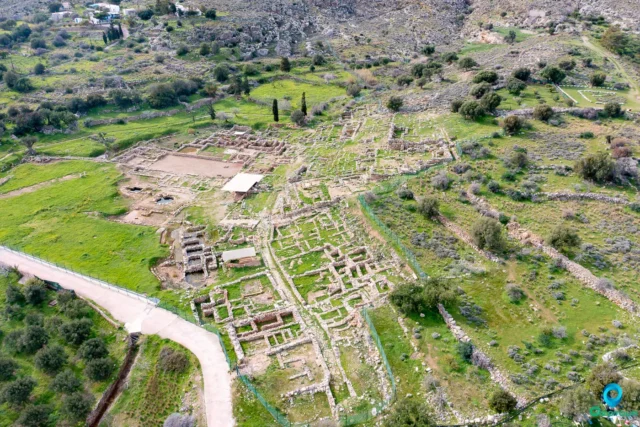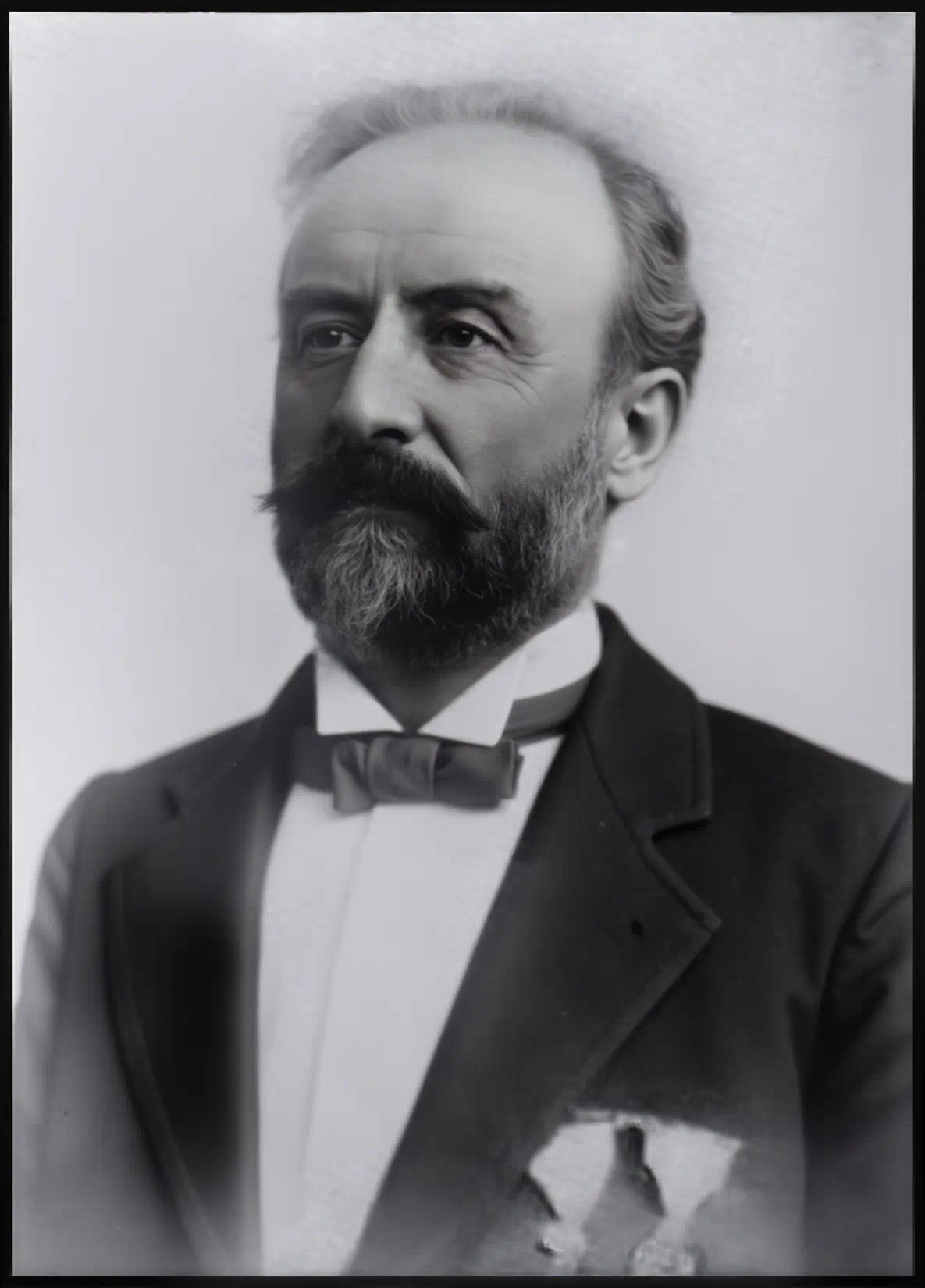Iosif Hatzidakis
Biography of Iosif Hatzidakis
Iosif Hatzidakis: Physician and Pioneer of Cretan Archaeology
Iosif Hatzidakis (1848–1936) was a central figure in the development of archaeology in Crete during the late 19th and early 20th centuries. Trained as a physician, he dedicated significant effort to the study and preservation of the island’s antiquities, particularly during the transition from Ottoman rule to the Cretan State and eventual unification with Greece. He held key positions, including President of the Philological Association of Heraklion, founder and first Director of the Heraklion Archaeological Museum, and the first Ephor of Antiquities for Crete. His work involved both personal excavation and collaboration with international archaeological missions, establishing an institutional framework for archaeology on the island.
Early Life, Medical Career, and Political Involvement
Born on the island of Milos in 1848, Iosif Hatzidakis had Cretan origins, as his parents were refugees who fled Crete during revolutions against Ottoman rule. His family was connected to Georgios Xenoudakis, a notable figure from Sfakia. Hatzidakis trained as a physician, specializing in obstetrics and gynecology, and authored medical texts. He moved to Heraklion, Crete, in 1882, where he practiced medicine until near his death in 1936.
Alongside his medical practice, Hatzidakis was active in Cretan politics and patriotic movements. He served as a Plenipotentiary (representative) for Crete and was a strong advocate for Cretan autonomy. In 1897, during the Cretan Revolutionary Assembly in Archanes, he had a significant confrontation with Eleftherios Venizelos over the issue of autonomy. Hatzidakis sought international support for this cause, utilizing his connections with foreign archaeologists like Federico Halbherr and Arthur Evans.
Role in the Philological Association (Syllogos) of Heraklion
The Philological Association (Φιλεκπαιδευτικός Σύλλογος Ηρακλείου), founded in 1875 or 1878, initially focused on educational matters. After Hatzidakis was elected President in 1883, the Association’s focus shifted towards archaeology. Under his leadership, it became the primary organization working to locate and preserve Crete’s archaeological heritage. In 1883, Hatzidakis secured permission from the Ottoman administration to establish the first archaeological collection in Heraklion, housed initially near the Agios Minas Cathedral. This collection formed the basis of the future Heraklion Archaeological Museum. The Syllogos, led by Hatzidakis and his collaborator Stephanos Xanthoudides, also worked to combat antiquities trafficking and facilitated early explorations, effectively acting as a preliminary archaeological service for the island before formal state institutions were established. Hatzidakis published a catalogue of the collection in 1888.
Archaeological Excavations
Iosif Hatzidakis conducted excavations at several important Cretan sites:
- Idaion Antron (Idaean Cave): In 1886, representing the Syllogos and collaborating initially with Federico Halbherr, Hatzidakis conducted the first official excavations at this sacred cave on Mount Ida, associated with the mythology of Zeus. He negotiated with locals to acquire artifacts and prevent looting, securing votive objects (bronze, terracotta) and libation tables for the Heraklion collection.
- Amnisos (Eileithyia Cave): Hatzidakis rediscovered and excavated this cave, dedicated to the goddess of childbirth, near the ancient port of Amnisos in 1886. Finds dated from the Neolithic to historical periods. He published a description of the cave in 1888. Collaboration with Halbherr is also suggested here.
- Gortyna: In 1884, Hatzidakis, along with Halbherr and Stephanos Xanthoudides, intervened to rescue the Great Law Code inscription, which had been partially uncovered by locals. This led to systematic excavations by the Italian Archaeological School, with whom Hatzidakis later collaborated in his official capacity.
- Tylisos: Prompted by a chance discovery of copper cauldrons in 1906, Hatzidakis undertook excavations from 1912 to 1915. He uncovered three substantial Minoan structures (Villas A, B, C) and found significant artifacts, including the cauldrons, Linear A tablets, seals, bronze figurines, and fresco fragments. He published his findings, notably in 1934. This site represents his most significant independent fieldwork.
- Malia: Hatzidakis conducted early work at this major Minoan palace site. He started excavations in the harbour area in 1915. Later work, possibly between 1919-1921, may have focused on the Chrysolakkos funerary complex. His investigations preceded the larger-scale work by the French School of Archaeology.
- Dreros: Some sources mention preliminary explorations by Hatzidakis at this Archaic site, but specific details are lacking in the provided materials.
Site | Dates of Work (approx.) | Key Findings/Focus | Collaborators | |
Idaion Antron | 1886 (initial) | Sacred cave assoc. w/ Zeus; Votives (bronze, terracotta), libation tables, sacrifice evidence; Addressed looting, negotiated artifact acquisition | F. Halbherr | |
Amnisos (Eileithyia Cave) | 1886 (rediscovery/exc.) | Cave of childbirth goddess; Neolithic-historical finds, altar, stalagmites, votives; Published description 1888 | F. Halbherr (?) | |
Gortyna | 1884 (rescue) | Rescue of Great Law Code inscription; Later oversight/collaboration with Italian Mission | F. Halbherr, S. Xanthoudides | |
Tylissos | 1912-1915 | Minoan town; 3 Villas/Megarons (A, B, C); Copper cauldrons, Linear A tablets, seals, bronze figurines, frescoes; Major publication (1934) | (Independent) | |
Malia | 1915 (port); 1919-1922? | Port excavations; Chrysolakkos structure focus (?); Preliminary work before French School; Publications 1919, 1921 | (Independent) | |
Dreros | Preliminary | Archaic site; Initial explorations mentioned | (?) |
Collaboration with Federico Halbherr
Hatzidakis worked closely with the Italian archaeologist Federico Halbherr. Their collaboration began with the Gortyna inscription rescue (1884) and the Idaean Cave excavation (1886), possibly extending to Amnissos. As Ephor, Hatzidakis likely facilitated permits for Halbherr’s major excavations at Phaistos and Hagia Triada. This relationship was mutually beneficial, combining Hatzidakis’s local authority and Halbherr’s international resources. It also extended to politics, with Halbherr supporting Hatzidakis’s efforts for Cretan autonomy. This collaboration occurred within the context of significant foreign archaeological interest and competition in Crete.
Founder of the Heraklion Archaeological Museum
Hatzidakis played a leading role in the foundation of the Heraklion Archaeological Museum. The museum originated from the collection started by the Philological Association under his presidency in 1883. After the establishment of the Cretan State around 1900, this collection was transferred to state control. Hatzidakis, along with Stephanos Xanthoudides, oversaw this transfer and the museum’s early management. The first dedicated museum building was constructed between 1904 and 1907/1908, designed by Wilhelm Dörpfeld and Panagis Kavvadias on the site of the former Venetian Monastery of St. Francis. Hatzidakis is consistently identified as the museum’s founder and first director, ensuring that finds from across Crete remained on the island. He documented the museum’s early history in a 1931 publication.
First Ephor of Antiquities for Crete
With the establishment of the autonomous Cretan State, an official Ephorate of Antiquities was created around 1900. Iosif Hatzidakis and Stephanos Xanthoudides were appointed as the first Ephors. Hatzidakis is often referred to as the first Ephor, possibly indicating seniority. In this role, he supervised all archaeological activities in Crete, managed the state antiquities collection (which became the Heraklion Museum), and oversaw interactions with foreign archaeological missions. He is believed to have held authority in granting excavation permits, reportedly allocating them based on his assessment of the missions’ capabilities. This position formalized the management of Crete’s archaeological heritage under local governmental control, a significant step beyond the earlier efforts of the Philological Association. He continued in this role after Crete’s union with Greece in 1913.
Relations with Foreign Archaeological Missions
Hatzidakis acted as a key intermediary between Cretan authorities and the numerous foreign archaeological missions (British, Italian, French, American) active on the island. He facilitated their work, collaborated on excavations (notably with Halbherr), and maintained communication. He is credited with promoting the “internationalization” of Cretan archaeology, welcoming foreign expertise and resources at a time when local capacity for large-scale excavation was limited. However, he operated within a period of intense international competition, sometimes termed “archaeological colonization.” As Ephor, he balanced encouraging foreign research with enforcing the Cretan State’s archaeological laws, which mandated that finds remain state property on the island. While cooperation was general, some tensions reportedly arose due to differing perspectives between local authorities and foreign archaeologists.
Legacy and Assessment
Iosif Hatzidakis is regarded as a foundational figure in Cretan archaeology, often called its “Nestor” (elder statesman). His work during a critical period of political transition was vital for the preservation of antiquities. His excavations, particularly at Tylisos, advanced knowledge of Minoan civilization. His most enduring legacies are the Heraklion Archaeological Museum, which he founded, and the Ephorate of Antiquities, which he helped establish, providing the institutional framework for archaeological work in Crete.
Scholarly views are generally positive, recognizing him as a dedicated pioneer and effective leader. However, some later perspectives, based on archival research, suggest he may have prioritized relations with influential foreign missions over developing local archaeological talent or collaborating with mainland Greek institutions. Despite these critiques, his role in discovering, preserving, and institutionalizing the management of Crete’s rich archaeological heritage, especially its Minoan past, remains significant.

